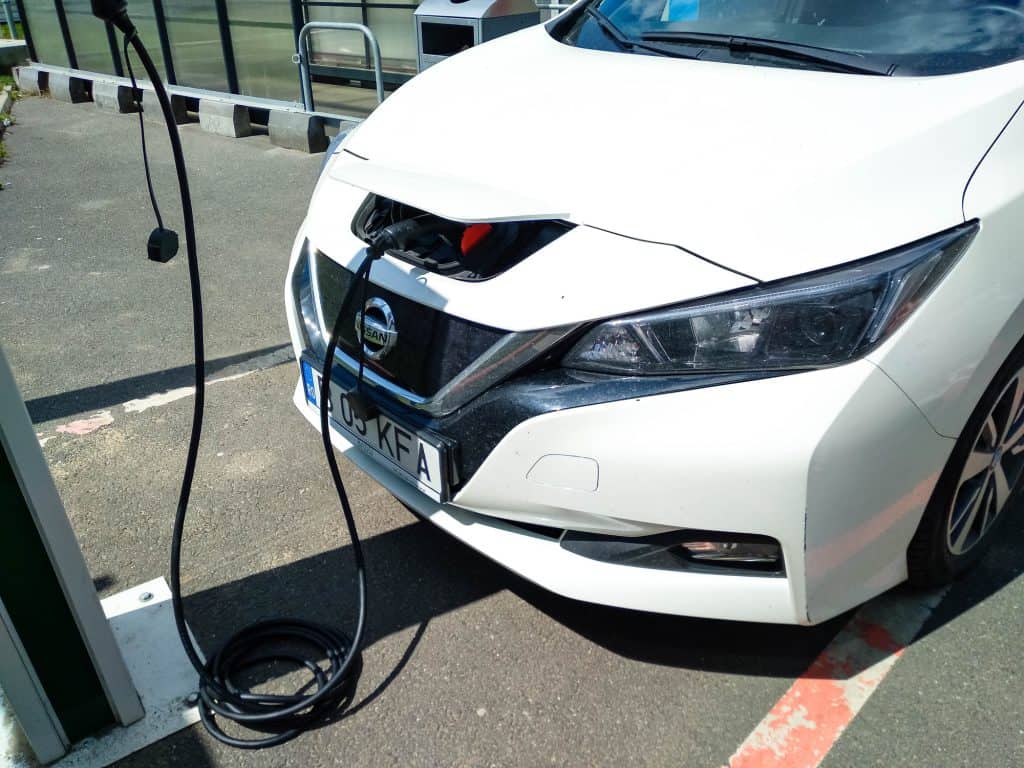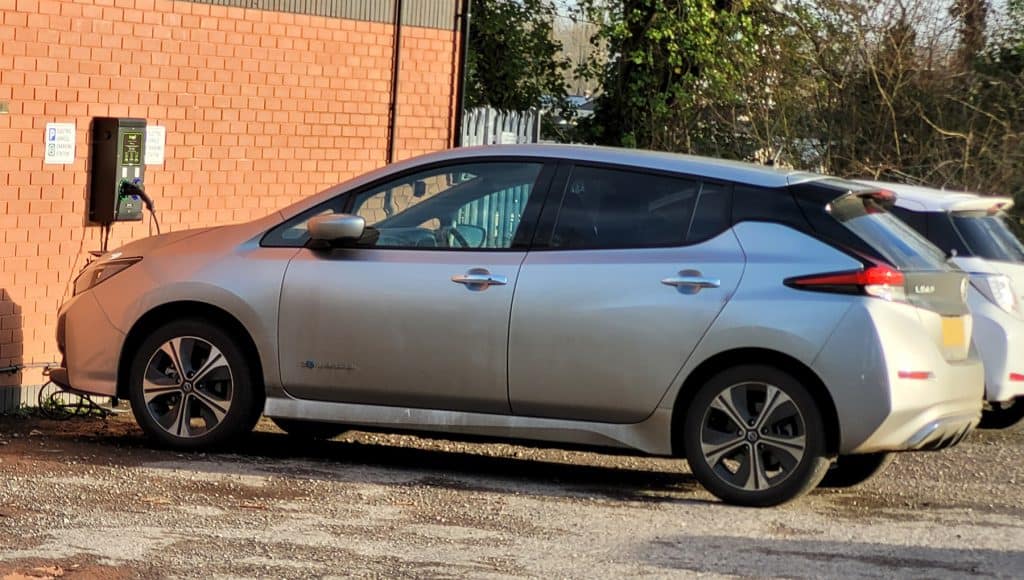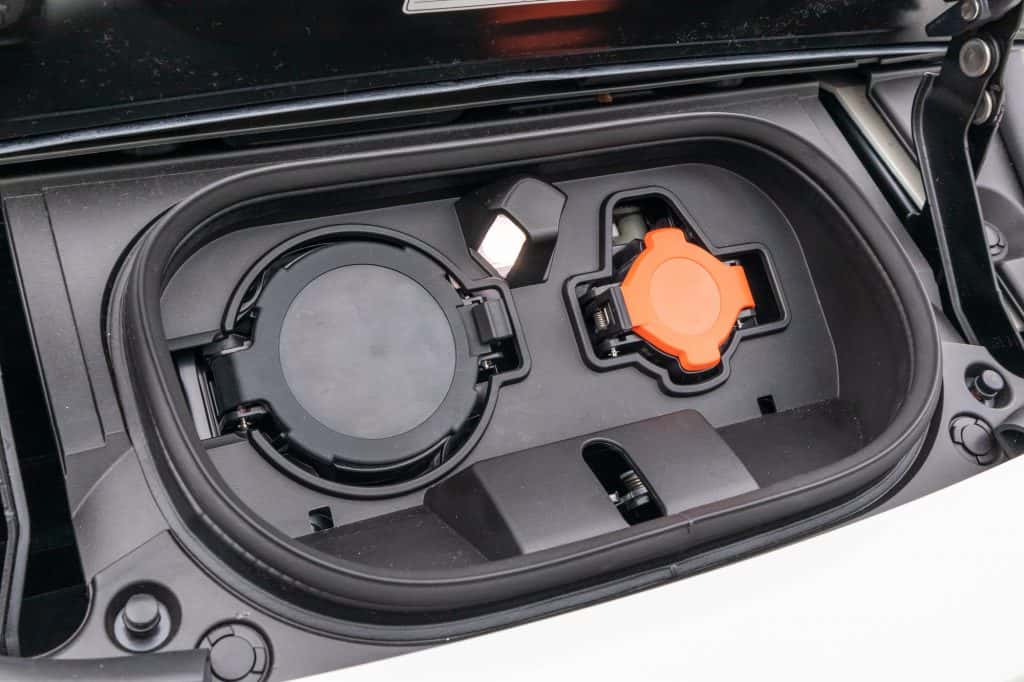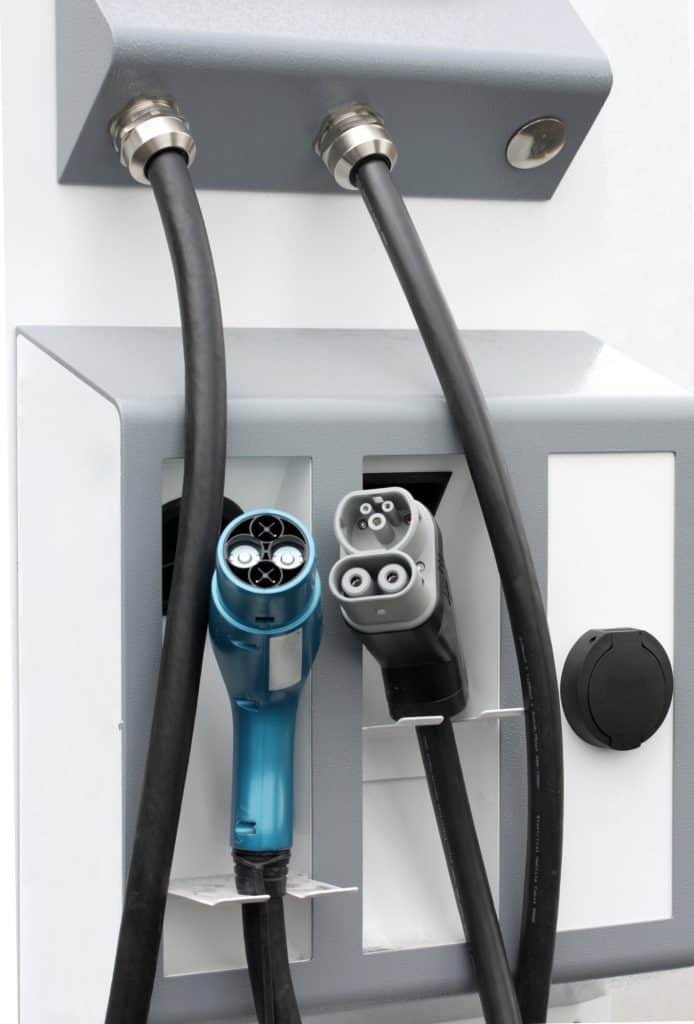Countless people around the world are now carefully considering how and when they might make “the big switch” and move over to an electric car. With governments around the world already putting in place measures that will curb the sales of new gasoline cars between 2030 and 2040, OEMs are stepping up EV design and production, and more people are considering getting on the electric bandwagon sooner rather than later. One question plagues most potential buyers however, and that’s the question of charging.
The Nissan Leaf is one of the earliest arrivals on the electric vehicle scene and one of the longest-standing choices. It remains popular as one of the more affordable EV options, especially when you factor in government subsidies and rebates.
The latest Nissan Leaf model at the time of writing (2022 model year) offers a single-charge battery range of between 150 and 226 miles depending on which model you choose. It’s a big improvement from the first generation models, but people still wonder how exactly they’ll manage the charging.
Does Nissan supply a charging cable? Is it even useful anymore? How can I be sure I’ll be able to charge my Nissan Leaf overnight from the first day that I get it? We will answer these questions and more in today’s blog.
Does a New Nissan Leaf Come with a Charging Cable?
Let’s start with the core question in today’s blog about whether or not you get a charging cable with your Nissan Leaf as standard. This is important because people want to know for sure if they’ll still be able to charge their car even without having taken any steps to install a separate charging system yet.
The answer to this question is yes, they do. The Nissanusa.com website confirms:
“All Nissan LEAF drivers receive a Nissan Portable Charge Cable that’s compatible with 120 volt outlets, but there are faster at-home charging options available for purchase.”
Nissan USA
We will take a closer look at some of those options in the next section below. First let’s take a closer look at this standard factory-issued Nissan Portable Charge Cable, which is also known more generally as a level 1 charging cable.
At one end of the cable you have the connector that you plug into your Leaf’s charging port at the front of the vehicle. At the other end of the cable you have a 3-prong plug that fits into any 120-volt 3-prong outlet. All you need to do to start the charging process is plug it in and let it go.

This charging option for many people is the easiest one as it allows you to plug your car into any 3-print 1200-volt socket at home or elsewhere. The cable is portable and easily stored in your trunk (or “frunk” in other electric cars, though sadly not the Leaf).
Pros and Cons of Using the Factory-Issued Level 1 Cable
- Pro – It’s convenient to plug in your car and charge it up at home or wherever you can plug in without having to worry about paying for installation of a whole new home system, or having to rely on far-away public charging stations.
- Pro – The cable is light, easy to transport, and easy to use even for those who are charging an electric car for the first time.
- Pro – The slow and steady charging stream helps to maintain battery health and prevents the chemistry from becoming unbalanced as happens when one charges too frequently using more powerful methods. It’s also easier on your energy bills than more powerful home-based charging methods.
- Con – The primary problem with level 1 cable charging is that it’s slow, only adding between 3 and 5 miles of range back into the battery for each hour of charging. If you have a large-capacity battery and you cover a lot of miles each day, it starts to become much less practical. A full charge can take 2 or more days on a Nissan Leaf.
What Other Options Exist for Charging?
While there are seemingly more pros than cons for level 1 cables, they are still not the cable of choice for most people who instead either pay to install a level 2 charging system in their home or make use of level 2 public chargers. Alternatively, and when in a hurry, they’ll make use of a DC fast charging system.
Level 2 Charging

If your factory-issued Nissan Leaf cable isn’t doing enough for you, then you can instead head down to your nearest public charger, plug in and charge away. Alternatively, you can bring that charging power to your own garage or driveway by installing your very own EV wallbox charger.
The good news is that all EVs in the US except Teslas come with the same J1772 connector — and even Tesla provides an adapter for its customers — meaning that virtually any wallbox connector will be compatible with your Nissan Leaf.
A level 2 system uses a 240-volt baseline, so it’s at least twice as powerful as level 1. Where level 1’s maximum amperage is just 15 amps, the level 2 systems can work up to 80 amps. The stronger current generates much better charging performance — typically 25-30 miles of range added per hour — making home charging a reality even for those with very large battery capacities.
With larger capacity in the batteries becoming the norm, level 2 has become the normal practical standard for anyone looking to charge a car like the Nissan Leaf. Level 1 charging is still useful, however, for those with low-capacity battery EVs such as plug-in hybrids.
Level 3/Fast Charging
The next level up for your Nissan Leaf is to take it to a DC Fast Charging (DCFC) or similar rapid charging network. You won’t be able to use the Tesla Supercharger until the company completes its wider rollout. At the time of writing, they have started to offer non-Tesla charging at select locations, but are yet to be able to offer it everywhere.
DCFC allows for 100-125 miles of range to be added in around 30 minutes of charging, making it the fastest option. You might wonder, then, why is anyone still bothering to take their Nissan Leaf to a boring-old level 2 charging station?
The reason is that while level 3 charging is much faster, it is not good for your car’s battery to be fast charged more than a couple of times in a week.
These chargers are typically placed along major highways where people need lots of mileage in a short time. Those charging for short-distance errand running and commuting don’t need to use this kind of charge, and their Leaf battery will thank them for that.
Are All Charging Cables the Same?

The answer is no, they are not, but the different types of charging cables are steadily coming closer together over time. Below we’ll take a look at what to expect on your Leaf in both North America and Europe.
North America
The standard connector for level 1 and level 2 charging in North America is the above-mentioned SAE J1772 connector, known to come as the J-plug. Tesla cars don’t have the J-plug as standard, but they do all come with adapters, allowing Tesla users to plug in to the same charging stations as everyone else.
It’s a little more involved when we start looking at level 3 / fast charging, however. There are 3 main fast charging connectors:
- Combined Charging System (CCS): The new more widely used standard level 3 plug that gets its name by combining a J1772 inlet with two additional charging pins below it. It’s now used by the majority of automakers in North America as the main standard/
- CHAdeMO: This was developed by a Japanese company called Tepco. It is still used across Japan as their standard connector, but in North America it’s only used on the Nissan Leaf and the Mitsubishi Outlander PHEV. Other OEMs like Kia previously used, but have since switched to CCS.
- Tesla: Tesla actually uses the same charging connector across all levels.
Europe
The first big difference in Europe is that there isn’t really “level 1” charging as it’s understood in the US because the standard power supply is 230 volts, which is almost double the US 120 volts. There are still factory-issued cables, and they can be plugged into outlets, too, but they can’t offer the same amperage as wallboxes, either, even though there’s more voltage.
Most therefore still go for level 2 wallbox charging with their standard IEC 62196 connector, which is more commonly known as a Mennekes connector. Even Tesla is using this standard on its Model 3 cars, but others are still using Tesla’s proprietary connector. Nissan Leaf owners can just stick with the standard.
For fast charging, the situation in Europe is the same as the US. If you’re a Nissan Leaf owner, therefore, you’ll be using a CHAdeMO connector (the one pictured on the left):

It should also be noted that the European version of the CCS uses its 62196 unit rather than the J1772 as the top section of the connector.
Cable Length Myth
There’s often a lot of discussion regarding cable size and length when it comes to charging EVs, including the Nissan Leaf. Some are worried that needing a longer cable will somehow slow down the charging process. People swear blind that longer cables add charging time, but the fact is that they do not.
Even if there is technically some impact from the fact that a longer cable does naturally mean more resistance, the effect on your overall charging time is negligible.
How to Protect Your EV Cable from Theft

So, whether you use your level 1 or level 2 Nissan Leaf charging cable solution at home, there is one more problem to think about, and that’s how to protect it from theft. This is especially a big problem for those who opt to park their Nissan Leaf outside because their garage is full or it’s more convenient to install the wallbox outside.
You might wonder why anyone would be trying to steal your charging cable and not your entire wallbox unit, or the $30,000+ car on the driveway, but the reality is sadly more practical for these criminals.
The materials within the cables can be sold to scrap metal dealers for good sums, and on top of that, most public charging stations in the US are unguarded since payment and everything else is automated. An April 2022 story on Fox News shared the growing problem of cable theft.
Thieves are also targeting Tesla adapters and CHAdeMO adapters, which can retail for hundreds of dollars on second-hand marketplaces. While charging stations are targeted more than individual homes right now for the obvious reason of a bigger prize, the crime is likely to spread to more neighborhoods as more people get EVs and install their own charging stations at home.
To protect them, consider one of the following methods:
- Padlocks – These are the most common solution, and EV makers have now even taken steps to include a dedicated loop in your EV charge port where you can secure cable against your car. If you’re a Leaf owner, you’ll find this loop right on the panel above the charging port.
- Lockbox – You can surround your outdoor charging station with a lockable steel box or other enclosure, keeping everything secure. Some even install an aperture to feed a small amount of cable through to charge the car overnight while the rest of the cable is secure in the lockup.
- Cameras – Getting cables can take time, and thus the presence of security cameras can be enough to deter criminals from trying anything at your home. This isn’t a bad security measure in general, in fact, and cameras can be worth installing regardless of whether you’re protecting a Nissan Leaf or not.